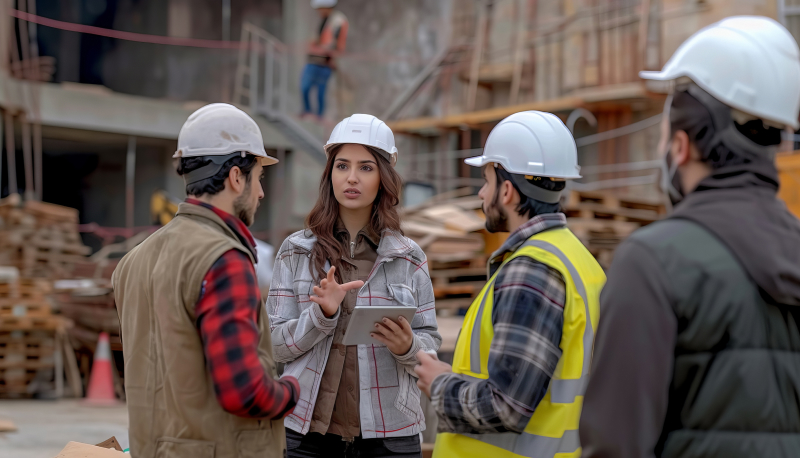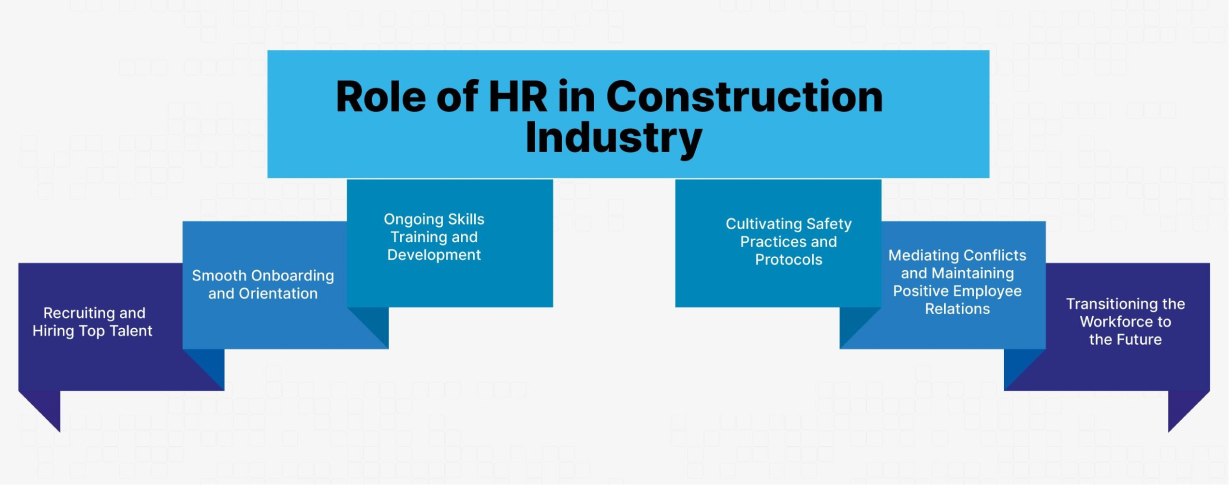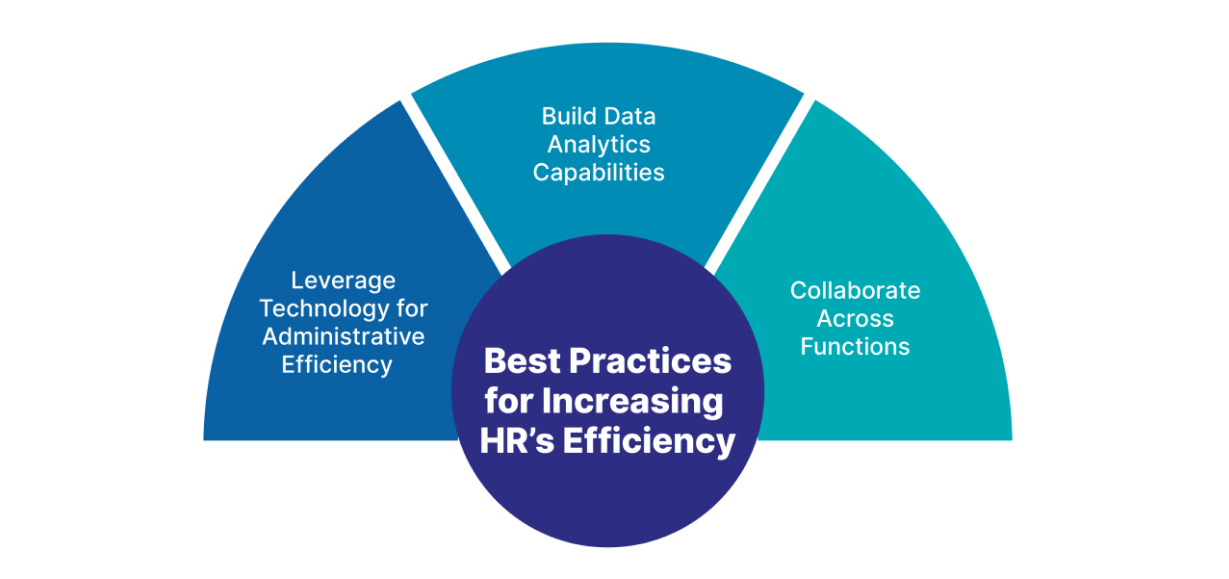
The construction industry is a major driver of economic growth and employment across the globe. However, it faces several human resources (HR) challenges related to skills shortages, high employee turnover, safety issues, and maintaining positive employee relations. While the core responsibilities of HR professionals are similar across various industries, the role of HR managers and departments takes on added importance in construction.
The role of HR is pivotal in attracting, recruiting and retaining skilled construction workers. With labor shortages and an aging workforce, the war for talent has never been more intense. HR develops tailored recruitment strategies, competitive compensation and benefits packages and pathways for career advancement to secure top talent.
Once employees are on board, HR ensures they receive adequate job training and certification to perform their duties safely and properly. Given the industry’s high safety risks, HR maintains compliance with rapidly evolving safety guidelines. HR also mediates any conflicts between managers and employees on construction sites to prevent disruptions.
HR may seem more of an office function, but the department is crucial on construction sites too. The industry faces unique challenges that make skilled HR professionals indispensable.
The construction industry is facing a growing shortage of skilled labor. As demand increases for new infrastructure, commercial buildings, and housing, the available workforce cannot keep pace. Construction firms fiercely compete for talent at all levels, from laborers to managers. Securing adequate staffing is one of the major pain points companies now contend with.
HR departments are on the frontlines developing creative recruitment and retention strategies to attract candidates and hold onto employees longer. Common initiatives include:
With such a tight labor market, construction firms cannot afford to lose experienced employees to competitors or other industries. HR plays a lead role in talent acquisition and building an engaging workplace culture where employees want to stay. Their efforts are essential to having the staff needed to keep projects moving forward on schedule.
Construction sites present many hazards that can lead to injuries or fatalities if proper precautions are not taken. As a result, the occupation has strict safety standards companies must follow to protect workers. Human resources is responsible for ensuring compliance with all regulations as well as best practices that reduce risks.
HR professionals must thoroughly train all employees on safety protocols and provide the necessary protective equipment. They conduct regular refreshers and updates as policies change. HR may also oversee safety inspections and checks at work sites. By making safety a top priority and core value, HR helps prevent accidents and violations that lead to project delays, fines, litigation, and damage to the company's reputation.
In addition to operations oversight, HR also handles incident reporting, workers compensation claims, and return to work procedures when injuries occur. Their leadership in maintaining safety programs, communication, and promoting a culture of accountability helps the construction firm complete projects incident-free.
The nature of construction work, with employees moving from site to site as projects wrap up, lends itself to high turnover rates. Losing experienced staffers mid-project can significantly derail budgets and timelines. Replacing them also incurs costs for recruitment and training new hires.
HR works to improve talent retention in construction through engagement and development initiatives that incentivize employees to stick around longer term. Examples include:
The expertise of HR professionals in the areas of company culture, compensation, team building, and more helps Construction firms engage employees for longer tenure. Their ability to understand workforce motivations and pull the right levers leads to better retention. That workplace stability saves construction companies money while ensuring reliable staffing to meet project deadlines.
While priorities vary across companies, these tasks are central to most construction HR roles:

The most fundamental responsibility for any HR team is finding, screening and hiring qualified employees to join the organization. However, recruiting is increasingly difficult in the construction sector due to widening skills gaps and falling numbers of workers entering the field.
HR utilizes creative sourcing techniques to connect with passive candidates already working in construction. Many HR teams also build partnerships with trade schools, community colleges, workforce development boards, and labor unions to facilitate a pipeline of new talent into the industry. Especially for publicly funded construction projects, hiring union labor may be mandatory.
To attract the best candidates, HR designs competitive compensation and benefits packages. Utilizing market research on regional salary norms and benefit offerings, HR constructs an employee value proposition catering to the motivations of the construction workforce. Popular incentives include signing bonuses, project completion bonuses, toolbox allowances, commuting benefits, and ample paid time off.
The interview and selection processes managed by HR also directly impact recruitment results. HR ensures hiring managers ask behavior-based questions aligned to the skills and competencies required for construction roles during interviews. HR may also orchestrate role playing exercises for candidates to demonstrate technical abilities.
Once recruits accept job offers, HR coordinates onboarding and orientation programs to ready them for work on day one. Onboarding includes handling any pre-employment administrative tasks like submitting documentation, drug testing, background checks and safety certifications.
Thorough orientation sessions introduce new hires to the organization’s culture, code of conduct, safety protocols and workplace policies. HR reviews all procedures, guidelines and expectations in detail to set clear standards from the start. For field employees like carpenters and electricians, orientation occurs on the construction site and involves hands-on equipment demonstrations.
The need for continual skills development has never been greater amidst construction’s growing skills gaps. HR plays a lead role in identifying current skills deficiencies within the workforce that could stall project timelines. HR may leverage performance evaluations and competency assessments of existing staff to pinpoint priority areas for upskilling.
In response, HR designs and spearheads targeted training programs to bridge skills shortfalls. For field employees, training focuses mainly on hard skills like operating machinery, welding techniques, carpentry methods and reading blueprints accurately. Soft skills development around communication, teamwork and problem-solving is also beneficial for dual craft workers taking on crew lead roles.
To incentivize participation and completion of skills training, HR incorporates program milestones into performance metrics and career ladder progression. Tracking training hours and certifications earned through HR technology systems also provides visibility into the capabilities of the current workforce.
The construction sector experiences some of the highest rates of workplace injuries and fatalities among all industries. HR plays an indispensable part in ingraining a culture of safety to minimize risks on the jobsite.
HR maintains full compliance with rapidly changing municipal, state and federal safety regulations in construction. Key priorities involve enforcing proper use of personal protective equipment (PPE), reporting protocols for injuries or near misses, job site housekeeping rules and emergency response preparedness.
HR develops safety orientation materials, delivers onboarding and ongoing safety training sessions and performs worksite audits. To motivate secure behaviors, many construction firms even integrate safety performance metrics into supervisor evaluations and bonus calculations. Promoting safety not only protects employees but also avoids schedule delays and budget overruns from injuries or accidents.
For complex, long-term construction projects, tightly coordinated collaboration across foremen, contractors, temporary laborers and off-site managers is essential. Yet, the diversity in backgrounds, communication styles and priorities for these stakeholders can breed misunderstandings and conflicts on the job site.
HR applies conflict resolution strategies to mediate emerging interpersonal issues and mitigate negative impacts on productivity. Techniques like active listening, separating people from problems and finding common interests help opposing parties reconcile differences.
More broadly, HR nurtures positive workplace cultures and employee engagement to prevent conflicts in the first place. HR may coordinate team building activities, cross-functional committees, mentoring programs and celebration events to break down silos. Conducting stay interviews and regular pulse surveys provides HR insight into evolving workforce needs.
Like most industries today, construction is undergoing rapid digitalization through technologies like AI, automation, augmented reality and exoskeletons. While technology unlocks safer and more efficient building methods, it also renders some traditional skills and roles obsolete.
HR keeps a finger on the pulse of technological innovation applicable to construction. You assess which capabilities will become critical for the workforce and which ones are at risk of replacement. Based on these insights, HR can more effectively upskill and reskill workers through emerging capabilities while managing layoffs smoothly.
Investing in digital fluency and capabilities like data analysis and critical thinking prepares workers for hybrid human-tech jobs. HR will play a key role in ensuring construction workforces have the agility to work alongside smarter machines.
Let’s explore the skills for construction HR managers:
A. Analyzing Trends
Study industry data to pinpoint hiring needs and retention risk factors. These insights tell HR where to focus.
B. Relationship Building
Cultivating connections with technical schools, unions, employees and other stakeholders is crucial for recruitment, training programs and more.
C. Communication Skills
Clearly convey policies, give feedback and facilitate discussions between diverse construction personalities without confusion.
D. Teaching Ability
Patiently educate everyone from new hires to veterans on protocols and processes verbally, visually and hands-on.
E. Conflict Resolution
Listen carefully and find compromise solutions to interpersonal issues that maintain team cohesion.
F. Organization
Coordinate extensive training schedules, compliance deadlines, hire paperwork and more without dropping balls.
G. Multitasking
HR priorities and problems arise simultaneously. Respond to each important item despite competing demands.
The typical HR to employee ratio ranges from 1:50 at smaller contractors to 1:200 at large national firms. Supported by strong HR information systems and office coordinators, HR managers make it work.
Today’s construction industry HR teams are stretched thin. Yet their role has never been more important for safeguarding compliant operations, engaging a multi-generational workforce and developing skills for the future. Here are three best practices for increasing HR’s capacity:

Automating repetitive, administrative HR tasks is imperative for freeing up budget and time to address strategic priorities. Cloud-based HR information systems centralize employee records, time tracking, payroll, onboarding paperwork and performance metrics on easy-to-use online platforms. HR staff save hours previously wasted on manual processes.
With reams of HR and operational data at their fingertips, analytics-empowered HR leaders can move from reactive to predictive. Identifying leading indicators for turnover, monitoring training impacts on safety metrics over time and leveraging attrition risk assessments allow you to get ahead of challenges before they balloon out of control.
While HR may spearhead recruitment, training and retention initiatives, their success hinges on cross-functional coordination. HR regularly engages with project management, finance, operations and leadership teams to incorporate workforce considerations into broader organizational decisions around expansion, technology adoption and more.
The future looks bright for construction HR. Emerging technologies like virtual reality and data analytics will help attract talent, prevent injuries and streamline training. HR will lead the charge in leveraging these tools.
While automation will claim some tasks, HR’s specialized human touch remains invaluable for the complex people challenges inherent to construction. Managers must embrace change, upskill constantly and focus on the responsibilities AI can’t replace.
Specifically, they will double down on building trust, empathy, strategic planning, creative problem solving and adapting best practices from other industries. HR makes businesses run, but people make them thrive.
Construction moves markets and transforms skylines, fulfilling essential infrastructure needs. But behind all the steel and concrete stand the HR leaders ensuring workforces make projects possible. That’s why for builders and employees alike, effective HR functions as an indispensable foundation – now and for years to come.

CredBadge™ is a proprietary, secure, digital badging platform that provides for seamless authentication and verification of credentials across digital media worldwide.
CredBadge™ powered credentials ensure that professionals can showcase and verify their qualifications and credentials across all digital platforms, and at any time, across the planet.

Please enter the License Number/Unique Credential Code of the certificant. Results will be displayed if the person holds an active credential from TMI.